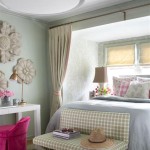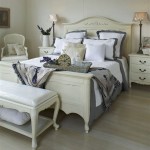Tropical House Decorating Ideas: Transforming Your Home into a Paradise
Tropical house decor aims to evoke the feeling of a lush, vibrant getaway. It is characterized by natural materials, bright colors, and a relaxed, airy atmosphere. This style is not merely about mimicking a specific geographic location, but rather capturing the essence of tropical living: comfort, serenity, and a connection to nature. Implementing tropical decorating ideas can effectively transform a living space into a tranquil retreat, regardless of the actual climate outside.
Key Elements of Tropical House Decor
Several core elements contribute to the distinctive aesthetic of tropical decor. Understanding these elements provides a foundational knowledge base for implementing this style within a home.
Natural Materials: The cornerstone of tropical design is the incorporation of natural, sustainable materials. These materials create a sense of authenticity and inherent connection to the environment. Think of materials that resonate with the outdoors, materials that are both durable and aesthetically pleasing.
Rattan, known for its flexibility and durability, is a particularly popular choice for furniture, especially chairs, tables, and headboards. Its woven texture adds visual interest and complements the overall tropical vibe. Bamboo, another readily available and sustainable material, can be used for flooring, wall coverings, and even decorative accents. Its light color and natural grain pattern contribute to the airy feel of the style. Wicker, similar to rattan, provides a textured element and is often found in seating and storage solutions. Consider incorporating elements like sea grass for rugs, or jute for baskets to hold various items. Finally, incorporating natural wood such as teak or mango wood brings warmth and depth to the space, and is especially appropriate for furniture.
Color Palette: The color palette for tropical decor is inspired by the vibrant landscapes found in tropical regions. The choices in color deeply impact the overall feeling of a space. The goal is to achieve a balance between vibrant and calm, creating an inviting and comfortable atmosphere.
Bright blues and greens, reminiscent of the ocean and lush foliage, take center stage. These colors can be used as primary wall colors or incorporated through accent pieces like pillows, artwork, and rugs. Yellows and oranges evoke the warmth of the sun and can be used strategically to add pops of energy to a room. Consider using these colors sparingly to avoid overwhelming the space. Earthy tones, such as beige, tan, and brown, provide a neutral backdrop and ground the brighter colors. These tones can be used for walls, flooring, and larger furniture pieces. White, either crisp or slightly off-white, helps to create a sense of airiness and lightness. It can also be used to balance out the brighter colors and prevent the space from feeling too overwhelming. These colors must be considered in tandem with the architectural features of the space. Consider the availability of natural light and use that as a guide for how to use each color.
Botanical Prints and Patterns: Incorporating botanical prints and patterns is a simple way to inject the essence of tropical flora into the space. These patterns can be used in a variety of applications, from wallpaper to textiles, and add a layer of visual interest. These prints should compliment the overall color scheme to create a cohesive and thoughtful design.
Large-scale floral prints, featuring hibiscus, orchids, and palm leaves, are a classic choice. These prints can be used on wallpaper, curtains, or even as framed artwork. Smaller-scale botanical patterns, such as banana leaf or fern prints, add subtle texture and visual interest. These patterns work well on pillows, cushions, and upholstery. Tropical animal prints, featuring parrots, flamingos, or monkeys, can add a playful touch to the decor. The scale and realism of these prints needs to be carefully considered. Avoid overly realistic or cartoonish depictions. Geometric patterns inspired by traditional tropical textiles can also be used to add a modern twist to the style. These patterns, such as ikat or batik, can be incorporated through rugs, throws, or wall hangings. It's crucial to strike a balance between incorporating botanical prints and avoiding an overwhelming or cluttered look. Consider varying the scale and placement of the prints to create a visually dynamic and harmonious space.
Implementing Tropical Decor in Different Rooms
The principles of tropical decor can be adapted and applied to various rooms within a home, each with its own unique considerations.
Living Room: The living room is often the primary gathering space in a home, making it an ideal area to showcase a welcoming and relaxing tropical ambiance. Focus on creating a comfortable and inviting space that encourages relaxation and conversation. The living room is the ideal place to put several key elements together.
Opt for natural fiber sofas and armchairs, such as those made of rattan or wicker. Add cushions and pillows in bright colors and botanical prints to create a comfortable and visually appealing seating arrangement. Incorporate a coffee table made of natural wood or glass to maintain the airy feel of the space. Layer a natural fiber rug, such as jute or sisal, to define the seating area and add texture to the floor. Add potted plants, such as palms or ferns, to bring the outdoors in and create a sense of freshness. Choose artwork featuring tropical landscapes or botanical illustrations to enhance the overall theme. Incorporate decorative items made of natural materials, such as seashells, coral, or driftwood, to add a touch of coastal charm. Consider incorporating sheer curtains to allow natural light to filter through while maintaining privacy. This creates a bright and airy atmosphere that is essential to the tropical aesthetic.
Bedroom: The bedroom should be a tranquil retreat, and tropical decor can contribute to a soothing and restorative environment. Prioritize creating a calm and relaxing space that promotes restful sleep.
Choose a bed frame made of natural materials, such as rattan or bamboo, to create a focal point. Layer the bed with soft linens in light colors, such as white, beige, or light blue. Add pillows and cushions in tropical prints to inject pops of color and visual interest. Incorporate bedside tables made of natural wood or rattan to provide storage and surface space. Place a natural fiber rug, such as jute or seagrass, under the bed to add warmth and texture to the floor. Add potted plants, such as orchids or snake plants, to purify the air and create a sense of tranquility. Choose artwork featuring serene tropical landscapes or abstract botanical patterns to enhance the calming atmosphere. Consider incorporating a sheer canopy over the bed to create a soft and romantic ambiance. Install a ceiling fan to circulate air and create a comfortable sleeping environment. The key is to keep personal preference in mind, allowing for a harmonious space created for relaxation.
Bathroom: The bathroom can be transformed into a spa-like oasis that evokes the feeling of a tropical resort. Focus on creating a clean, refreshing, and revitalizing space.
Use natural stone or tile for the flooring and walls to create a sense of luxury. Incorporate a wooden vanity with natural stone countertops for a touch of elegance. Add a large mirror to reflect natural light and create a sense of spaciousness. Hang towels in bright colors and tropical prints to add pops of color and visual interest. Place potted plants, such as ferns or bamboo, to purify the air and create a sense of tranquility. Incorporate decorative items made of natural materials, such as seashells, coral, or sea sponges, to add a touch of coastal charm. Choose artwork featuring serene tropical landscapes or abstract botanical patterns to enhance the calming atmosphere. Install a rainfall showerhead to create a spa-like experience. Consider adding a freestanding bathtub for ultimate relaxation. The bathroom should remain a comfortable and functional space, so choosing the correct items is a key element that must be considered.
Creative Tropical Decorating Ideas
Beyond the core elements and room-specific applications, there are numerous creative ideas that can further enhance the tropical ambiance of a home.
DIY Tropical Wall Art: Creating personalized wall art is a cost-effective way to add a unique touch to the decor. Utilizing elements from the outdoors, natural items can be used to bring the essence of nature inside.
Press and frame dried flowers or leaves from tropical plants to create botanical artwork. Collect seashells, coral, and driftwood from the beach and arrange them in shadow boxes or on shelves to create coastal-inspired displays. Create a gallery wall of framed tropical postcards or vintage travel posters. Paint a mural depicting a tropical landscape or abstract botanical pattern. Use stencils to create intricate patterns on walls or furniture. Consider using natural elements to accent the frame of any artwork or mirror to tie it into a cohesive theme. The key to ensuring these ideas work is to ensure a cohesive style is implemented and adhered to, avoiding designs that are too chaotic and overwhelming.
Upcycled Furniture: Revamping existing furniture with a tropical twist is a sustainable and creative way to incorporate this style into a home. Transform outdated pieces into something unique and eye-catching.
Paint old furniture in bright colors and add botanical-printed fabric to the cushions. Replace hardware with natural materials, such as rope or bamboo. Sand down wooden furniture and apply a natural oil finish to enhance the wood grain. Add rattan or wicker accents to drawers and doors. Create a unique headboard by attaching reclaimed wood planks and painting them with a tropical-inspired design. Turn old suitcases into unique storage units by adding tropical-printed fabric liners. It provides a way to use what you have, and reduce consumption of new items, helping to ensure the most sustainable outcome is met. Focusing on the natural colors helps to create a cohesive look.
Outdoor Living Spaces: Extending the tropical decor to outdoor spaces creates a seamless transition between indoor and outdoor living. This helps to extend the livable space beyond the home itself.
Create a comfortable seating area with outdoor furniture made of natural materials, such as rattan or wicker. Add cushions and pillows in bright colors and tropical prints to create a welcoming ambiance. Hang string lights or lanterns to create a soft and inviting atmosphere. Incorporate potted plants, such as palms, ferns, and hibiscus, to create a lush and vibrant environment. Add a hammock or swing for ultimate relaxation. Create a water feature, such as a small fountain or pond, to add a sense of tranquility. Install a covered patio or pergola to provide shade and protection from the elements. Ensure that all outdoor furniture is water resistant and can endure the weather in the area. This ensures the longevity of the pieces and safeguards the initial investment.

38 Tropical Decorating Ideas To Bring The Beach Inside

38 Tropical Decorating Ideas To Bring The Beach Inside Living Room Decor

Tropical Home Decor 9 Quick And Easy Decorating Ideas

25 Cozy Sunroom Decor Ideas With Tropical Theme House Design And Home Decorating

Caribbean Decorating Ideas For Your Home Island Origins

Tropical Design Décor Ideas For Your Home Flooring

Miami Inspired Tropical Decor Ideas

Contemporary Family Room By Henderson Design Group Tropical Living Interior Home Decor

How To Bring The Tropics Into Your Home Interior

Tropical Home Decor 9 Quick And Easy Decorating Ideas
Related Posts







